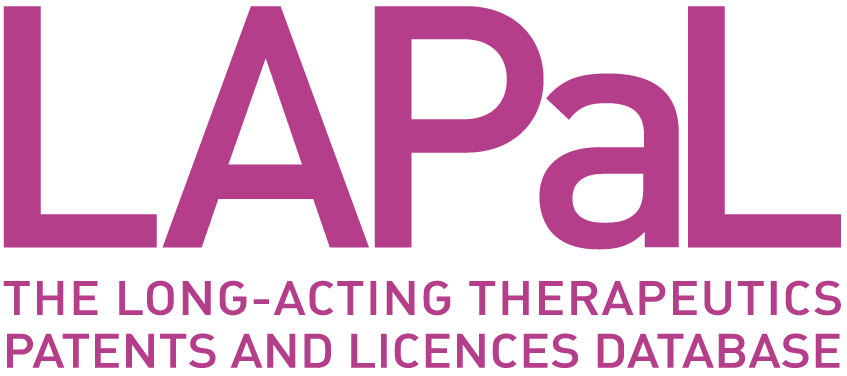
|
Developed by 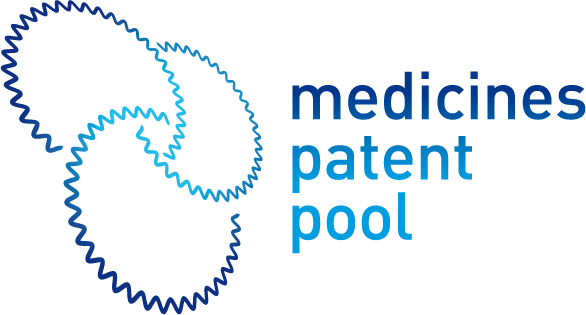

|
Supported by 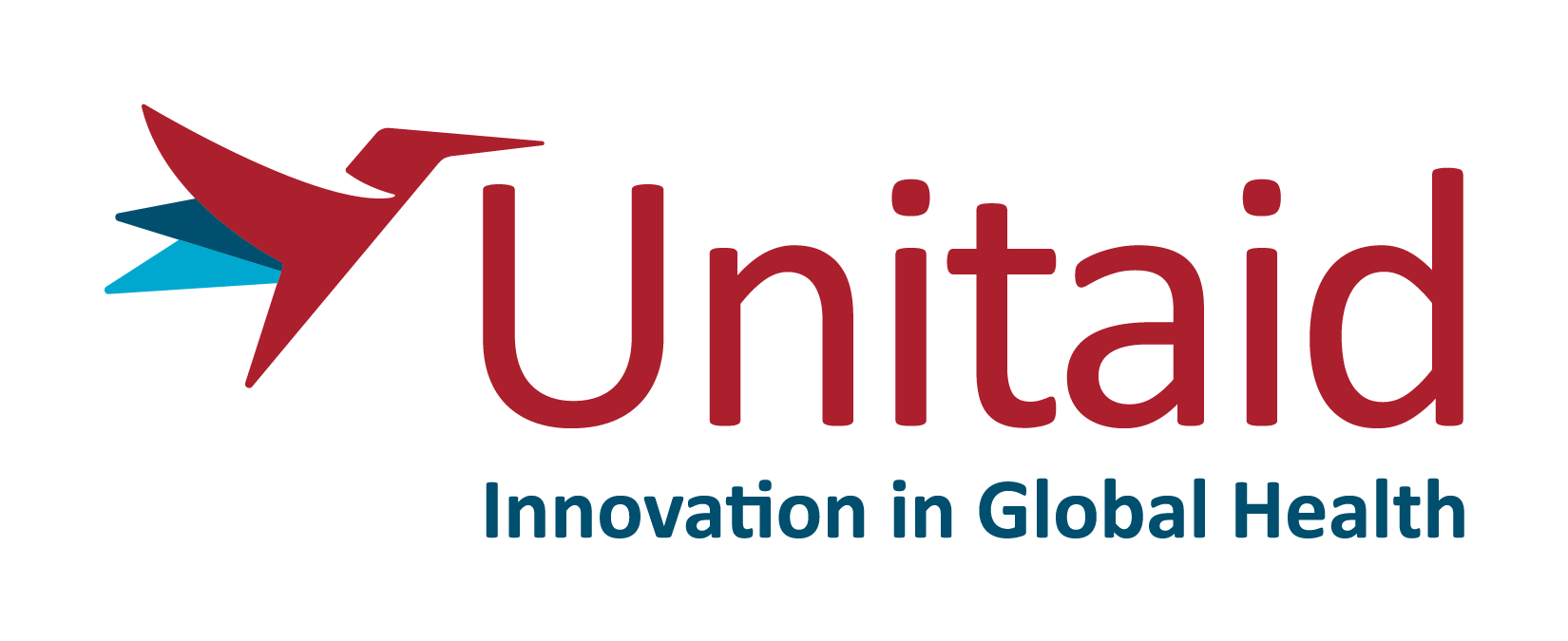

|
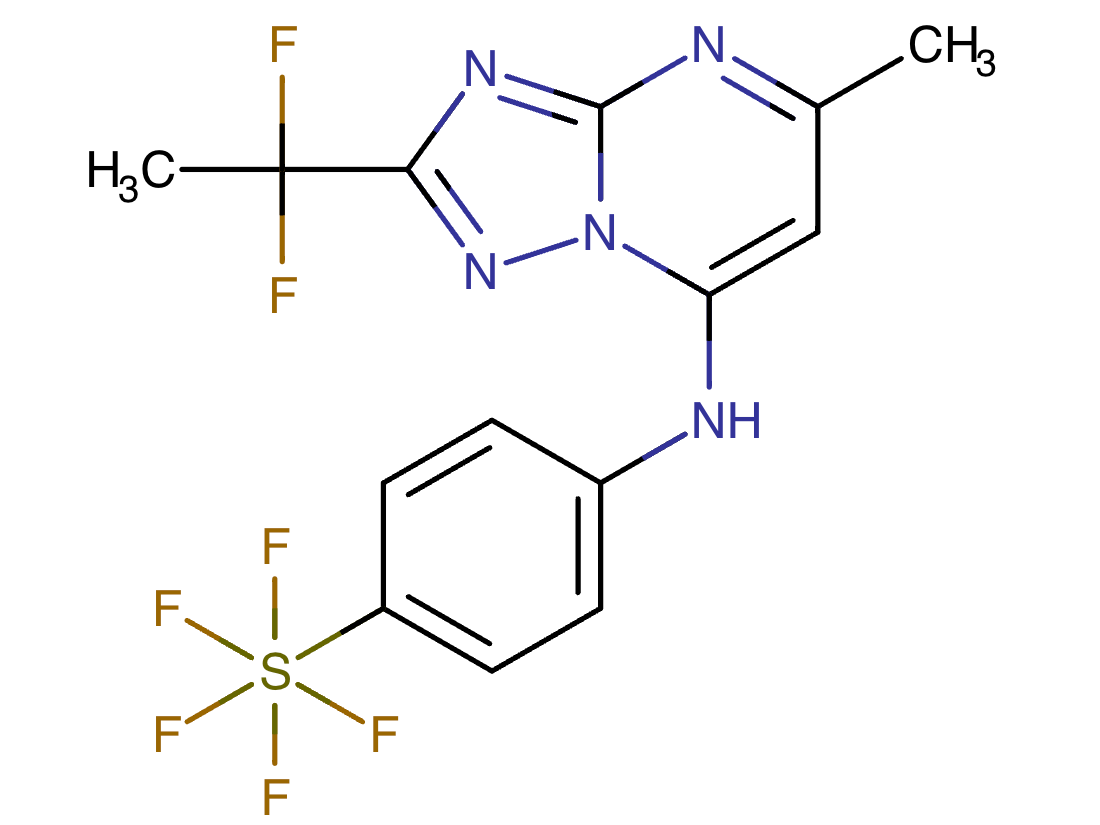
DSM265
Developer(s)
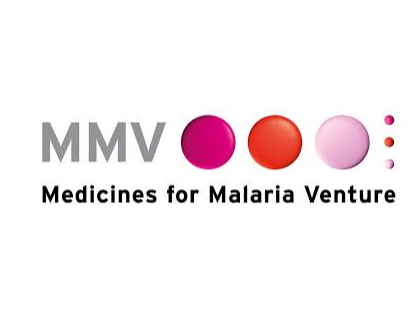
|
Medicines for Malaria Venture Originator
https://www.mmv.org/
Switzerland MMV is a Swiss-based not-for-profit organization working through a product development partnership model to deliver a portfolio of accessible medicines with the power to treat, prevent and eliminate malaria. We close critical gaps in research, development and access – working “end-to-end” to expand the use of existing antimalarials and innovate new compounds to protect public health. |

|
Takeda Pharmaceuticals Originator
https://www.takeda.com/
Japan Takeda aims to discover and deliver life-transforming treatments in our core therapeutic and business areas, including gastrointestinal and inflammation, rare diseases, plasma-derived therapies, oncology, neuroscience and vaccines. |
Drug structure

DSM265 Chemical Structure
Sourced from Drugbank
Drug information
Associated long-acting platforms
Oral solid form
Administration route
Oral
Therapeutic area(s)
Use case(s)
Use of drug
Ease of administration
User acceptance
Not provided
Dosage
Available dose and strength
investigational
Frequency of administration
Not provided
Maximum dose
Not provided
Recommended dosing regimen
Not provided
Additional comments
Not provided
Dosage link(s)
Not provided
Drug information
Drug's link(s)
Generic name
Brand name
Compound type
Summary
Approval status
Regulatory authorities
Delivery device(s)
No delivery device
Scale-up and manufacturing prospects
Scale-up prospects
Spray-dried dispersion (SDD) formulations were developed to improve both the solubility and bioavailability of DSM265, in which the drug is present in a stable amorphous state. The spray-drying technology is scalable and suitable for continuous processing, which could potentially facilitate the commercial-scale manufacture of DSM265. Progressive improvements to the chemical synthesis pathway and sourcing of lower-cost starting materials have substantially reduced the overall manufacturing cost of the DSM265 drug substance.
Tentative equipment list for manufacturing
Not provided
Manufacturing
The current spray-dried formulation of DSM265 may generate packaging issues due to poor flow properties. Additionally, the oral suspension is administered and dispersed using an aqueous solution containing sweetener and solubilising agents. The requirement for an accompanying dosing medium increases the costs of drug administration and poses commercial as well as logistical challenges. Development of a granulation process to improve the flow properties of the formulation whilst also incorporating the necessary solubilising excipients to enable water-based reconstitution would be beneficial.
Specific analytical instrument required for characterization of formulation
Not provided
Clinical trials
MMV_DSM265_14_01
Identifier
NCT02450578
Link
https://clinicaltrials.gov/ct2/show/NCT02450578
Phase
Phase I
Status
Completed
Sponsor
Medicines for Malaria Venture
More details
Not provided
Purpose
Evaluate the Prophylactic Antimalarial Activity of a Single Dose of DSM265 in Non-immune Healthy Adults by Controlled Human Malaria Infection With PfSPZ Challenge
Interventions
Intervention 1
Intervention 2
Intervention 3
Intervention 4
Countries
Sites / Institutions
Not provided
Trials dates
Anticipated Start Date
Not provided
Actual Start Date
2015-10-01
Anticipated Date of Last Follow-up
Not provided
Estimated Primary Completion Date
Not provided
Estimated Completion Date
Not provided
Actual Primary Completion Date
2016-04-01
Actual Completion Date
2016-04-01
Studied populations
Age Cohort
- Adults
Genders
- All
Accepts pregnant individuals
No
Accepts lactating individuals
No
Accepts healthy individuals
Yes
Comments about the studied populations
Good health based on medical history and physical examination- Body mass index >18 and <30 kg/m2
Health status
Study type
Interventional (clinical trial)
Enrollment
22
Allocation
Randomized
Intervention model
Parallel Assignment
Intervention model description
Not provided
Masking
Quadruple-blind masking
Masking description
Quadruple (Participant, Care Provider, Investigator, Outcomes Assessor)
Frequency of administration
Studied LA-formulation(s)
Studied route(s) of administration
Use case
PrEP
Key resources
| Type | Title | Content | Link |
|---|---|---|---|
| Link | DSM265 for Plasmodium falciparum chemoprophylaxis: a randomised, double blinded, phase 1 trial with controlled human malaria infection | https://doi.org/10.1016/s1473-3099(17)30139-1 |
MMV_DSM265_13_02
Identifier
NCT02123290
Link
https://clinicaltrials.gov/ct2/show/NCT02123290
Phase
Phase II
Status
Completed
Sponsor
Medicines for Malaria Venture
More details
Not provided
Purpose
Examine the efficacy of DSM265 in uncomplicated Plasmodium falciparum and Plasmodium vivax blood-stage malaria in adult patients.
Interventions
Intervention 1
Countries
Sites / Institutions
Not provided
Trials dates
Anticipated Start Date
Not provided
Actual Start Date
2015-01-12
Anticipated Date of Last Follow-up
Not provided
Estimated Primary Completion Date
Not provided
Estimated Completion Date
Not provided
Actual Primary Completion Date
2015-12-02
Actual Completion Date
2016-01-01
Studied populations
Age Cohort
- Adults
Genders
- All
Accepts pregnant individuals
No
Accepts lactating individuals
No
Accepts healthy individuals
No
Comments about the studied populations
Participants have a body weight between 45-90kg and a confirmed mono-infection of P. falciparum or P. vivax.
Health status
Study type
Interventional (clinical trial)
Enrollment
45
Allocation
Non-randomized
Intervention model
Parallel Assignment
Intervention model description
Not provided
Masking
Open label
Masking description
None (Open Label)
Frequency of administration
Studied LA-formulation(s)
Studied route(s) of administration
Use case
Treatment
Key resources
| Type | Title | Content | Link |
|---|---|---|---|
| Link | Antimalarial activity of single-dose DSM265, a novel plasmodium dihydroorotate dehydrogenase inhibitor, in patients with uncomplicated Plasmodium falciparum or Plasmodium vivax malaria infection | https://doi.org/10.1016/s1473-3099(18)30309-8 |
MMV_DSM265_14_03
Identifier
NCT02562872
Link
https://clinicaltrials.gov/ct2/show/NCT02562872
Phase
Phase I
Status
Completed
Sponsor
Medicines for Malaria Venture
More details
Not provided
Purpose
Evaluate the Pharmacokinetics, Prophylactic Activity, Tolerability and Safety of Single Dose DSM265 in a Controlled Human Malarial Infection Challenge
Interventions
Intervention 1
Intervention 2
Intervention 3
Intervention 4
Countries
Sites / Institutions
Not provided
Trials dates
Anticipated Start Date
Not provided
Actual Start Date
2016-03-01
Anticipated Date of Last Follow-up
Not provided
Estimated Primary Completion Date
Not provided
Estimated Completion Date
Not provided
Actual Primary Completion Date
2017-05-01
Actual Completion Date
2017-05-01
Studied populations
Age Cohort
- Adults
Genders
- All
Accepts pregnant individuals
No
Accepts lactating individuals
No
Accepts healthy individuals
Yes
Comments about the studied populations
Participants are in good health with a body mass index of >18 and <30kg/m2.
Health status
Study type
Interventional (clinical trial)
Enrollment
24
Allocation
Randomized
Intervention model
Parallel Assignment
Intervention model description
Not provided
Masking
Quadruple-blind masking
Masking description
Quadruple (Participant, Care Provider, Investigator, Outcomes Assessor)
Frequency of administration
Studied LA-formulation(s)
Studied route(s) of administration
Use case
PrEP
Key resources
DSMOZ-2
Identifier
NCT02573857
Link
https://clinicaltrials.gov/ct2/show/NCT02573857
Phase
Phase I/II
Status
Terminated
Sponsor
Medicines for Malaria Venture
More details
Not provided
Purpose
Characterise the Transmission Blocking and Antimalarial Activity of OZ439 and DSM265 in Blood Stage Plasmodium Vivax or Plasmodium Falciparum Infection Respectively.
Interventions
Intervention 1
Intervention 2
Countries
Sites / Institutions
Not provided
Trials dates
Anticipated Start Date
Not provided
Actual Start Date
2015-10-01
Anticipated Date of Last Follow-up
Not provided
Estimated Primary Completion Date
Not provided
Estimated Completion Date
Not provided
Actual Primary Completion Date
2016-05-01
Actual Completion Date
2016-05-01
Studied populations
Age Cohort
- Adults
Genders
- All
Accepts pregnant individuals
No
Accepts lactating individuals
No
Accepts healthy individuals
Yes
Comments about the studied populations
Not provided
Health status
Study type
Interventional (clinical trial)
Enrollment
16
Allocation
Non-randomized
Intervention model
Single group assignment
Intervention model description
Not provided
Masking
Open label
Masking description
None (Open Label)
Frequency of administration
Studied LA-formulation(s)
Studied route(s) of administration
Use case
Treatment
Key resources
| Type | Title | Content | Link |
|---|---|---|---|
| Link | DSM265 at 400 Milligrams Clears Asexual Stage Parasites but Not Mature Gametocytes from the Blood of Healthy Subjects Experimentally Infected with Plasmodium falciparum | https://doi.org/10.1128/aac.01837-18 |
MMV_DSM265_18_01
Identifier
NCT03637517
Link
https://clinicaltrials.gov/study/NCT03637517
Phase
Phase I
Status
Completed
Sponsor
Medicines for Malaria Venture
More details
Phase 1 study designed to evaluate the relative bioavailability of a single dose of a test formulation, DSM265-TPGS 34% SDD powder in comparison with a reference DSM265 25% SDD powder formulation used in early clinical trials.
Purpose
Malaria: Relative Bioavailability and Food Effect of DSM265
Interventions
Not provided
Countries
Not provided
Sites / Institutions
Not provided
Trials dates
Anticipated Start Date
Not provided
Actual Start Date
2018-10-03
Anticipated Date of Last Follow-up
2020-02-25
Estimated Primary Completion Date
Not provided
Estimated Completion Date
Not provided
Actual Primary Completion Date
2018-11-19
Actual Completion Date
2018-11-19
Studied populations
Age Cohort
- Adults
Genders
- All
Accepts pregnant individuals
Unspecified
Accepts lactating individuals
Unspecified
Accepts healthy individuals
Yes
Comments about the studied populations
1. Subjects or their legally authorized representative must voluntarily sign and date each informed consent, approved by an Independent Ethics Committee(IEC) / Institutional Review Board (IRB), prior to the initiation of any screening or study-specific procedures. 2. Male or female between 18 and 55 years of age inclusive at the time of screening. 3. Body Mass Index (BMI) is ≥ 18.0 to ≤ 29.9 kg/m2 after rounding to the tenths decimal. BMI is calculated as weight in kg divided by the square of height measured in meters. 4. Females must be of Non-Childbearing Potential as defined below Females do not need to use birth control during or following study drug treatment if considered of non-childbearing potential due to meeting any of the following criteria: * Postmenopausal, age ≤ 55 yea
Health status
Not provided
Study type
Interventional (clinical trial)
Enrollment
42
Allocation
Randomized
Intervention model
Parallel Assignment
Intervention model description
Not provided
Masking
Open label
Masking description
Not provided
Frequency of administration
Not provided
Studied LA-formulation(s)
Not provided
Studied route(s) of administration
Not provided
Use case
Not provided
Key resources
B16-963
Identifier
NCT02750384
Link
https://clinicaltrials.gov/study/NCT02750384
Phase
Phase I
Status
Terminated
Sponsor
Medicines for Malaria Venture
More details
This is a single-dose, fasting and non-fasting, open-label, randomized, three-regimen, parallel group study in 42 subjects
Purpose
Bioavailability and Effect of Food on DSM265 Granules in Healthy Adult Subjects
Interventions
Not provided
Countries
Not provided
Sites / Institutions
Not provided
Trials dates
Anticipated Start Date
Not provided
Actual Start Date
2016-05-01
Anticipated Date of Last Follow-up
2016-09-13
Estimated Primary Completion Date
Not provided
Estimated Completion Date
Not provided
Actual Primary Completion Date
2016-07-01
Actual Completion Date
2016-07-01
Studied populations
Age Cohort
- Adults
Genders
- All
Accepts pregnant individuals
Unspecified
Accepts lactating individuals
Unspecified
Accepts healthy individuals
Yes
Comments about the studied populations
Inclusion Criteria: * Female subjects of non-child bearing potential: * surgically sterile (by hysterectomy and/or bilateral oophorectomy and/or bilateral salpingectomy or bilateral tubal ligation) OR * postmenopausal (without use of hormonal contraceptive and spontaneous amenorrhea for 12 months and follicle stimulating hormone \> 40 IU/mL age appropriate for menopause and no other medical explanation for amenorrhea) * Males: * If he (including those who have had a vasectomy) is sexually active with female partner(s) of childbearing potential, he must agree, from Day 1 through 120 days after the dose of study drug to practice the continuous acceptable methods of contraception with his partner(s). * If he has a female partner who is postmenopausal or permanently sterile, the mal
Health status
Not provided
Study type
Interventional (clinical trial)
Enrollment
11
Allocation
Randomized
Intervention model
Parallel Assignment
Intervention model description
Not provided
Masking
Open label
Masking description
Not provided
Frequency of administration
Not provided
Studied LA-formulation(s)
Not provided
Studied route(s) of administration
Not provided
Use case
Not provided
Key resources
Excipients
Proprietary excipients used
Not provided
Novel excipients or existing excipients at a concentration above Inactive Ingredients Database (IID) for the specified route of administration
Not provided
Residual solvents used
Not provided
Patent info
Description
DSM-265 compound
Brief description
Inhibitors of parasitic dihydroorotate dehydrogenase enzyme (DHOD) are candidate therapeutics for treating malaria. Illustrative of such therapeutic agents include the compound: and a triazolopyrimidine class of compounds that conform to Formula (IX): and their solvates, stereoisomers, tautomers and pharmaceutically acceptable salts. (DSM-265 given as Example 44) Method of treating Malaria.
Representative patent
WO2011041304
Category
Compound
Patent holder
Board of Regents, University of Texas System; Monash University; Medicines For Malaria Venture; University of Washington; Glaxosmithkline Investigacion Y Desarrollo, S.L
Exclusivity
Not provided
Expiration date
September 14, 2031
Status
Granted: EP, US, CN, CA, BR, JP, IN, HK
Supporting material
Publications
Alka Marwaha, John White, Farah El_Mazouni, Sharon A Creason, Sreekanth Kokkonda, Frederick S. Buckner, Susan A. Charman, Margaret A. Phillips, and Pradipsinh K. Rathod. Bioisosteric Transformations and Permutations in the Triazolopyrimidine Scaffold To Identify the Minimum Pharmacophore Required for Inhibitory Activity against Plasmodium falciparum Dihydroorotate Dehydrogenase. Journal of Medicinal Chemistry 2012 55 (17), 7425-7436 DOI: www.doi.org/10.1021/jm300351w
Plasmodium falciparum causes approximately 1 million deaths annually. However, increasing resistance imposes a continuous threat to existing drug therapies. We previously reported a number of potent and selective triazolopyrimidine-based inhibitors of P. falciparum dihydroorotate dehydrogenase that inhibit parasite in vitro growth with similar activity. Lead optimization of this series led to the recent identification of a preclinical candidate, showing good activity against P. falciparum in mice. As part of a backup program around this scaffold, we explored heteroatom rearrangement and substitution in the triazolopyrimidine ring and have identified several other ring configurations that are active as PfDHODH inhibitors. The imidazo[1,2-a]pyrimidines were shown to bind somewhat more potently than the triazolopyrimidines depending on the nature of the amino aniline substitution. DSM151, the best candidate in this series, binds with 4-fold better affinity (PfDHODH IC50 = 0.077 μM) than the equivalent triazolopyrimidine and suppresses parasites in vivo in the Plasmodium berghei model.
Jose M. Coteron, María Marco, Jorge Esquivias, Xiaoyi Deng, Karen L. White, John White, Maria Koltun, Farah El Mazouni, Sreekanth Kokkonda, Kasiram Katneni, Ravi Bhamidipati, David M. Shackleford, Iñigo Angulo-Barturen, Santiago B. Ferrer, María Belén Jiménez-Díaz, Francisco-Javier Gamo, Elizabeth J. Goldsmith, William N. Charman, Ian Bathurst, David Floyd, David Matthews, Jeremy N. Burrows, Pradipsinh K. Rathod, Susan A. Charman, and Margaret A. Phillips. Structure-Guided Lead Optimization of Triazolopyrimidine-Ring Substituents Identifies Potent Plasmodium falciparum Dihydroorotate Dehydrogenase Inhibitors with Clinical Candidate Potential. Journal of Medicinal Chemistry 2011 54 (15), 5540-5561. DOI: www.doi.org/10.1021/jm200592f
Drug therapy is the mainstay of antimalarial therapy, yet current drugs are threatened by the development of resistance. In an effort to identify new potential antimalarials, we have undertaken a lead optimization program around our previously identified triazolopyrimidine-based series of Plasmodium falciparum dihydroorotate dehydrogenase (PfDHODH) inhibitors. The X-ray structure of PfDHODH was used to inform the medicinal chemistry program allowing the identification of a potent and selective inhibitor (DSM265) that acts through DHODH inhibition to kill both sensitive and drug resistant strains of the parasite. This compound has similar potency to chloroquine in the humanized SCID mouse P. falciparum model, can be synthesized by a simple route, and rodent pharmacokinetic studies demonstrated it has excellent oral bioavailability, a long half-life and low clearance. These studies have identified the first candidate in the triazolopyrimidine series to meet previously established progression criteria for efficacy and ADME properties, justifying further development of this compound toward clinical candidate status.
Sulyok M et al. “DSM265 for Plasmodium falciparum chemoprophylaxis: a randomised, double blinded, phase 1 trial with controlled human malaria infection.” Lancet Infect Dis. 17(6):636-644 (2017).
Background:
A drug for causal (ie, pre-erythrocytic) prophylaxis of Plasmodium falciparum malaria with prolonged activity would substantially advance malaria control. DSM265 is an experimental antimalarial that selectively inhibits the parasite dihydroorotate dehydrogenase. DSM265 shows in vitro activity against liver and blood stages of P falciparum. We assessed the prophylactic activity of DSM265 against controlled human malaria infection (CHMI).
Methods:
At the Institute of Tropical Medicine, Eberhard Karls University (Tübingen, Germany), healthy, malaria-naive adults were allocated to receive 400 mg DSM265 or placebo either 1 day (cohort 1A) or 7 days (cohort 2) before CHMI by direct venous inoculation (DVI) of 3200 aseptic, purified, cryopreserved P falciparum sporozoites (PfSPZ Challenge; Sanaria Inc, Rockville, MD, USA). An additional group received daily atovaquone-proguanil (250-100 mg) for 9 days, starting 1 day before CHMI (cohort 1B). Allocation to DSM265, atovaquone-proguanil, or placebo was randomised by an interactive web response system. Allocation to cohort 1A and 1B was open-label, within cohorts 1A and 2, allocation to DSM265 and placebo was double-blinded. All treatments were given orally. Volunteers were treated with an antimalarial on day 28, or when parasitaemic, as detected by thick blood smear (TBS) microscopy. The primary efficacy endpoint was time-to-parasitaemia, assessed by TBS. All participants receiving at least one dose of chemoprophylaxis or placebo were considered for safety, those receiving PfSPZ Challenge for efficacy analyses. Log-rank test was used to compare time-to-parasitemia between interventions. The trial was registered with ClinicalTrials.gov, number NCT02450578.
Findings:
22 participants were enrolled between Oct 23, 2015, and Jan 18, 2016. Five participants received 400 mg DSM265 and two participants received placebo 1 day before CHMI (cohort 1A), six participants received daily atovaquone-proguanil 1 day before CHMI (cohort 1B), and six participants received 400 mg DSM265 and two participants received placebo 7 days before CHMI (cohort 2). Five of five participants receiving DSM265 1 day before CHMI and six of six in the atovaquone-proguanil cohort were protected, whereas placebo recipients (two of two) developed malaria on days 11 and 14. When given 7 days before CHMI, three of six volunteers receiving DSM265 became TBS positive on days 11, 13, and 24. The remaining three DSM265-treated, TBS-negative participants of cohort 2 developed transient submicroscopic parasitaemia. Both participants receiving placebo 7 days before CHMI became TBS positive on day 11. The only possible DSM265-related adverse event was a moderate transient elevation in serum bilirubin in one participant.
Interpretation:
A single dose of 400 mg DSM265 was well tolerated and had causal prophylactic activity when given 1 day before CHMI. Future trials are needed to investigate further the use of DSM265 for the prophylaxis of malaria.
Additional documents
No documents were uploaded
Useful links
Access principles
|
|
Collaborate for developmentConsider on a case by case basis, collaborating on developing long acting products with potential significant public health impact, especially for low- and middle-income countries (LMICs), utilising the referred to long-acting technology Not provided |
|
|
Share technical information for match-making assessmentProvide necessary technical information to a potential partner, under confidentiality agreement, to enable preliminary assessment of whether specific medicines of public health importance in LMICs might be compatible with the referred to long-acting technology to achieve a public health benefit Not provided |
|
|
Work with MPP to expand access in LMICsIn the event that a product using the referred to long-acting technology is successfully developed, the technology IP holder(s) will work with the Medicines Patent Pool towards putting in place the most appropriate strategy for timely and affordable access in low and middle-income countries, including through licensing Not provided |
Comment & Information
It appears that the development of DSM265 may be stopped.